By guest contributor Christian Hunold, Associate Professor, Department of Politics, Drexel University
In the spring of 2012 I stumbled across a community of amateur naturalists who were drawn to Philadelphia’s Benjamin Franklin Parkway not by the museums or the cultural events, but by a pair of red-tailed hawks nesting on a second-story window ledge of the Franklin Institute. Grid Magazine had requested some pictures of the hawks, and so I spent one sunny afternoon in late May photographing the half-grown chicks huddled on the nest at the corner of 21st and Winter Street.
I recall feeling a little bored: where was the fun in shooting urban hawks? How could birds habituated to humans, like the city’s ubiquitous pigeons and geese, be at all interesting? And the noise and stink of the unrelenting traffic assaulting my senses from all sides made me think that Center City was the last place on Earth anyone should be asked to photograph wildlife. The only bright spot was the beautiful early evening light I had to work with: at least my images of the chicks weren’t going to be the worst anyone had ever taken, even if the awkward half downy/half feathered look they were sporting at this age did not scream “charismatic megafauna.”
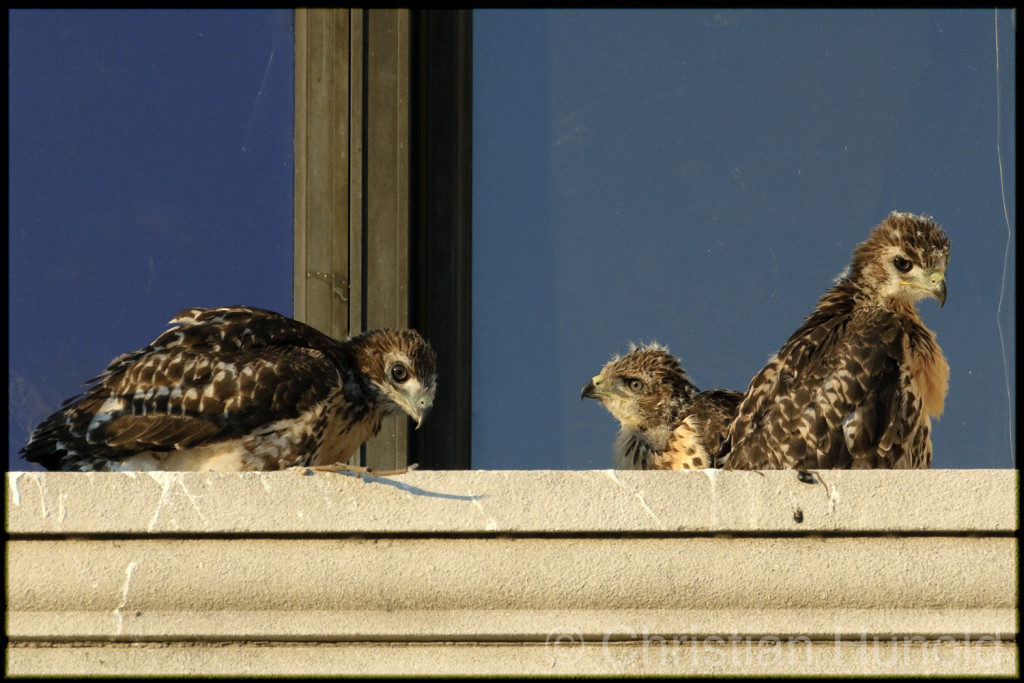 Another year would pass before my previously separate lives as a wildlife photographer and as a scholar of environmental politics merged around the topic of urban wildlife. May had come around again, and I decided to visit the nest one afternoon. The hawks were once more raising three chicks. This time, I caught a glimpse of one of the adults trailing the Institute’s roofline along 21st Street before it was briefly obscured by the building. Moments later it cleared the roof and, set off against the golden glow of the late afternoon sandstone façade, delivered the bloody remains of a squirrel to the nest. While the other parent fed chunks of meat to the three hungry chicks, the successful hunter flew to a nearby plane tree, where it cleaned its beak and talons.
Another year would pass before my previously separate lives as a wildlife photographer and as a scholar of environmental politics merged around the topic of urban wildlife. May had come around again, and I decided to visit the nest one afternoon. The hawks were once more raising three chicks. This time, I caught a glimpse of one of the adults trailing the Institute’s roofline along 21st Street before it was briefly obscured by the building. Moments later it cleared the roof and, set off against the golden glow of the late afternoon sandstone façade, delivered the bloody remains of a squirrel to the nest. While the other parent fed chunks of meat to the three hungry chicks, the successful hunter flew to a nearby plane tree, where it cleaned its beak and talons.
Now this was not boring! On subsequent outings I got to know the hawks as well as some of the people who watched them. I knew the Franklin Institute’s online “nest cam” had attracted a popular following around the world. But I did not at first appreciate the extent to which the hawks’ travels through the city were being monitored on the ground. The hawk watchers – middle-aged, more women than men – were not so much bird watchers as dyed-in-the-wool hawk fans, intimately familiar with the birds’ daily habits and life histories. I learned they had named the female bird “Mom” and the male “T2,” short for “Tiercel 2” (he was the female’s second mate since the hawks had nested at the Franklin Institute.) When the chicks fledged in June I was there with my camera to document their early forays to nearby trees, buildings, and monuments. I’d gotten hooked.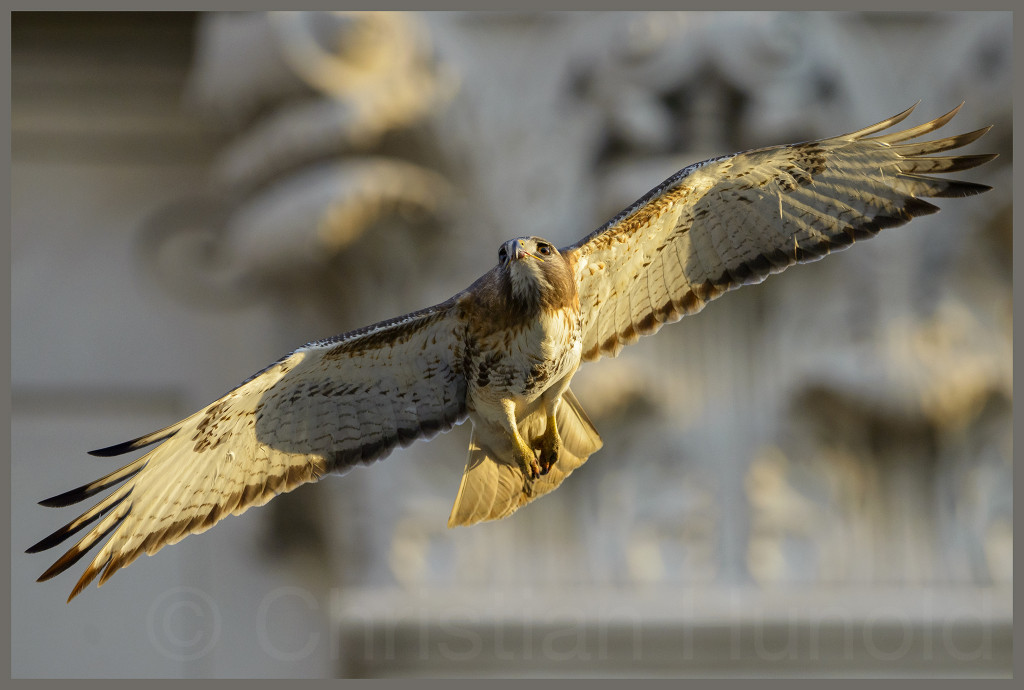
The following weeks, however, were to prove unusually deadly for the fledglings. The first mishap occurred on July 3, when one of them died after flying into a window at Moore College of Art & Design, on Logan Circle. Remarkably, this was the first recorded death of a Franklin Institute fledgling: the fifteen birds born up to that season had all survived until dispersing in the fall. That said, few young raptors survive their first year of life: collisions, predation, and starvation take a heavy toll on inexperienced young birds, urban and rural alike. Ecologically, the fledgling’s premature death was nothing out of the ordinary. But for the hawk watchers it represented a troubling departure from normal.
I loved shooting the hawks, I also enjoyed getting to know some of the hawk watchers. In my work as a political scientist I had written about environmental movements and, more recently, about problems of urban sustainability. Never about nature, as such, but the hawks and the humans I was meeting got me thinking. The hawk watchers were attuned to a rich urban ecology most of us rarely see. And when we do see it, we often dismiss it as diminished compared to the seemingly pristine wilderness portrayed in television nature documentaries. How, then, did these amateur naturalists, who were not wildlife professionals, think about urban wildlife? In half a decade of close observation of the animals and the space by the hawk watchers, one of the continent’s premier museum districts had revealed itself as vibrant wildlife habitat.
Had that growing knowledge of the city as a habitat challenged the common assumption that “nature” – nonhuman animals – and human culture are two separate things? How had the experience of following the hawks around their city home shaped how the hawk watchers thought about the presence of wildlife along the Parkway? Had the hawks convinced them that hawks belong in the city as much as people do?
With these sorts of questions in mind I turned to the self-deprecatingly named Franklin Hawkaholics Facebook group, which served as a popular platform for sharing images and observations, for commenting on nest cam activity, and so forth. Following the fledgling’s death, hundreds of expressions of sadness were shared on this page. But the hawk watchers’ sense of loss also generated lots of thoughtful questions about the coexistence of people and animals in the city.
Several Facebook posts broached the subject of window collisions. When someone suggested there were “ways to prevent it, by making the windows a trifle opaque” and someone else inquired why people didn’t “design things that take into consideration the other living things around us,” there ensued a spirited debate about building design and the suitability for wildlife of the city more generally.
One person asserted that windows were “another part of the urban environment to which these wild creatures cannot fully adapt.” Another agreed: “Design has nothing to do with it. Windows reflect the scene around them, and birds sometimes can’t tell the difference between real sky and reflected sky, or aren’t even looking where they are going (flying forward but looking down for prey, for example) and just hit the window.” Others claimed that good design could make a difference – “the larger the window, the bigger the illusion of the sky in the window” – but speculated that factors like cost and convenience prevented more widespread consideration of the needs of wildlife in building design.
Several hawk watchers defended cities as wildlife habitat, noting that window collisions were hardly limited to the “plate glass canyon in Center City.” “We can take animals into consideration when we design things. […] This is not an urban problem. This is a modern problem,” insisted another participant in this discussion.
Barely three weeks later, a second fledgling collided with the Moore College glass façade. The stunned young female was taken to the Wildlife Clinic at the Schuylkill Center for Environmental Education for observation, where she died of her injuries a few days later. The hawk watchers organized a spontaneous social media and email campaign to persuade Moore College to address the problem. In just two days the college received hundreds of requests to modify the windows in order to protect the hawks as well as other birds. The college responded very quickly: “We at Moore College of Art & Design are deeply saddened by the very unfortunate incidents with the FI hawks. Because we care, we have chosen to add a significant banner installation, featuring artwork by our students, in front of the large windows by our main entrance, which should help in avoiding future accidents. As a visual arts institution we care about the integrity of our building and as a member of the community we want to help in preserving wildlife and nature.” The colorful banners were installed in late August, prompting one hawk watcher to thank the college for “preserving our wildlife, while adding to our culture.”
The hawk watchers’ attentiveness to the human/wildlife interface on the Parkway gave rise to insightful interpretations of the space’s tangled human and animal worlds. For example, they reasoned that construction projects like the Barnes Foundation construction along with stepped-up rodent control efforts had altered the hawks’ diet, entailing riskier hunting strategies: “I think the problem this year is that these juvies are flying after little birds instead of jumping down on rodents (as in previous years); The trees right in front of the Moore windows are loaded w/birds; Mom and T2 fly straight into those trees from the library all the time. The trees are reflected in the Moore windows. The experienced adults may know when to stop; the juvies are not recognizing the difference,” surmised one veteran hawk watcher.
The hawk watchers were not simply watching urban hawks but also imagining a city where people and animals could safely and happily co-exist. Through their engagement with these animals, the hawk watchers could see how the shape of the city might be a little bit different if people could acknowledge that the hawks had chosen to live in the city for reasons that made sense to them, even if these reasons did not necessarily make sense to us. The hawks, for their part, were active participants in building a compelling story of human-wildlife relations in, of all places, Center City Philadelphia.
Through their activities, interactions, and travels the hawks rejected that almost default expectation that people belong in the city, and wildlife belongs in wilderness. They picked the city. All too often, wild animals in the city are seen as out of place, and illegitimate. By opening themselves to the hawks’ agency in the matter of choosing their home, and by thinking together about how the city does, can, and should include animals, the hawk watchers, it seems to me, are showing the rest of us how to reimagine the terms of coexistence with the nonhuman residents of our city.
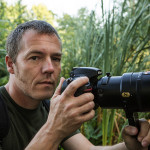 About the Author
About the Author
Christian Hunold teaches environmental politics at Drexel University. A paper titled “Why Not the City? Urban Hawk Watching and the End of Nature” is forthcoming in the journal Nature and Culture, Volume 12, Issue 2, Summer 2017. You can find more of his wildlife photography at https://www.flickr.com/photos/christianhunold/.
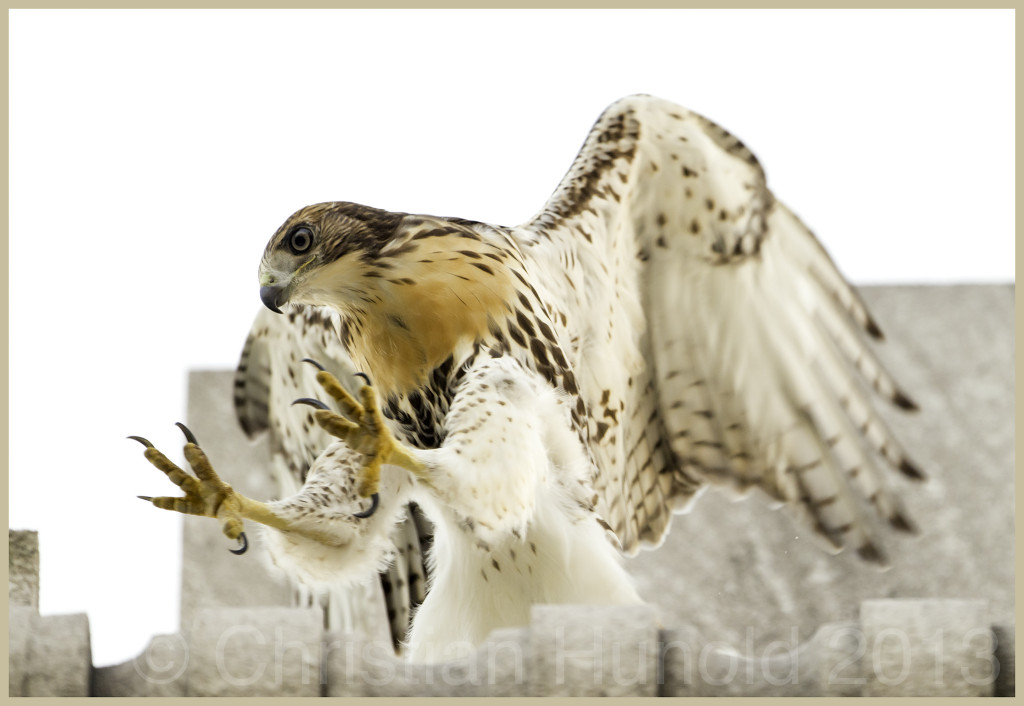
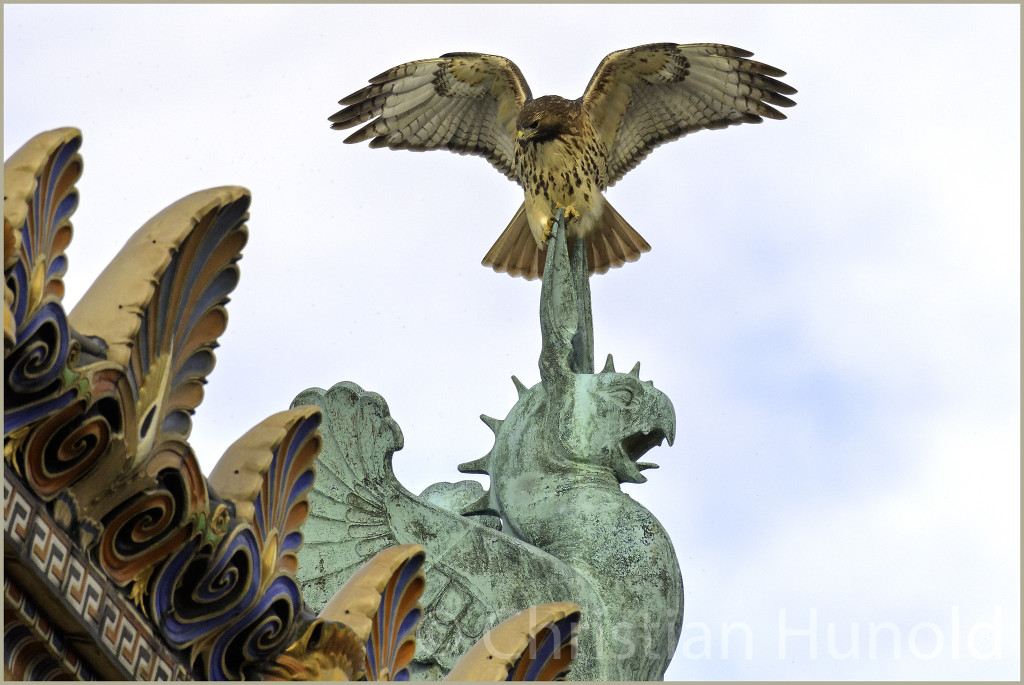

Wonderful article!! So good to see the goodness of the hawk watchers and Moore College of Art working together.
Thanks, Kitty!
Thank you for sharing this article with me on Flickr. Really appreciated the insight. I had no idea Red-tails could live in such close proximity to urban life.
I am very well acquainted to Peregrines living such lives in many cities all over the world. This is a first for me and I thank you for sharing this wonderful story.
Hope to see and photograph them for myself eventually.
Keep up the great work Christian !
Thanks for the kind words, Christian.
There are several Peregrine nests in Philadelphia. They’re monitored & managed by the Pennsylvania Game Commission as part of the species recovery effort. Urban redtails, on the other hand, don’t seem to attract much attention from wildlife biologists.